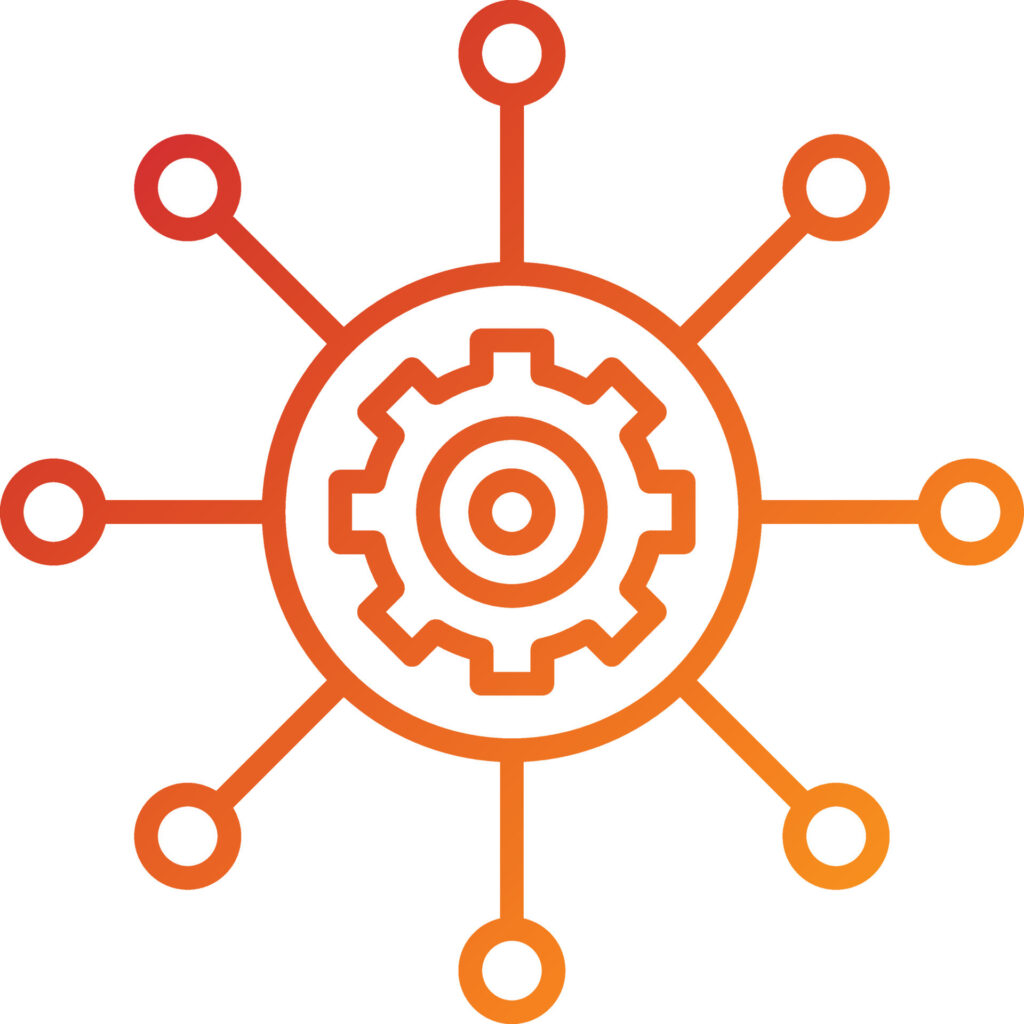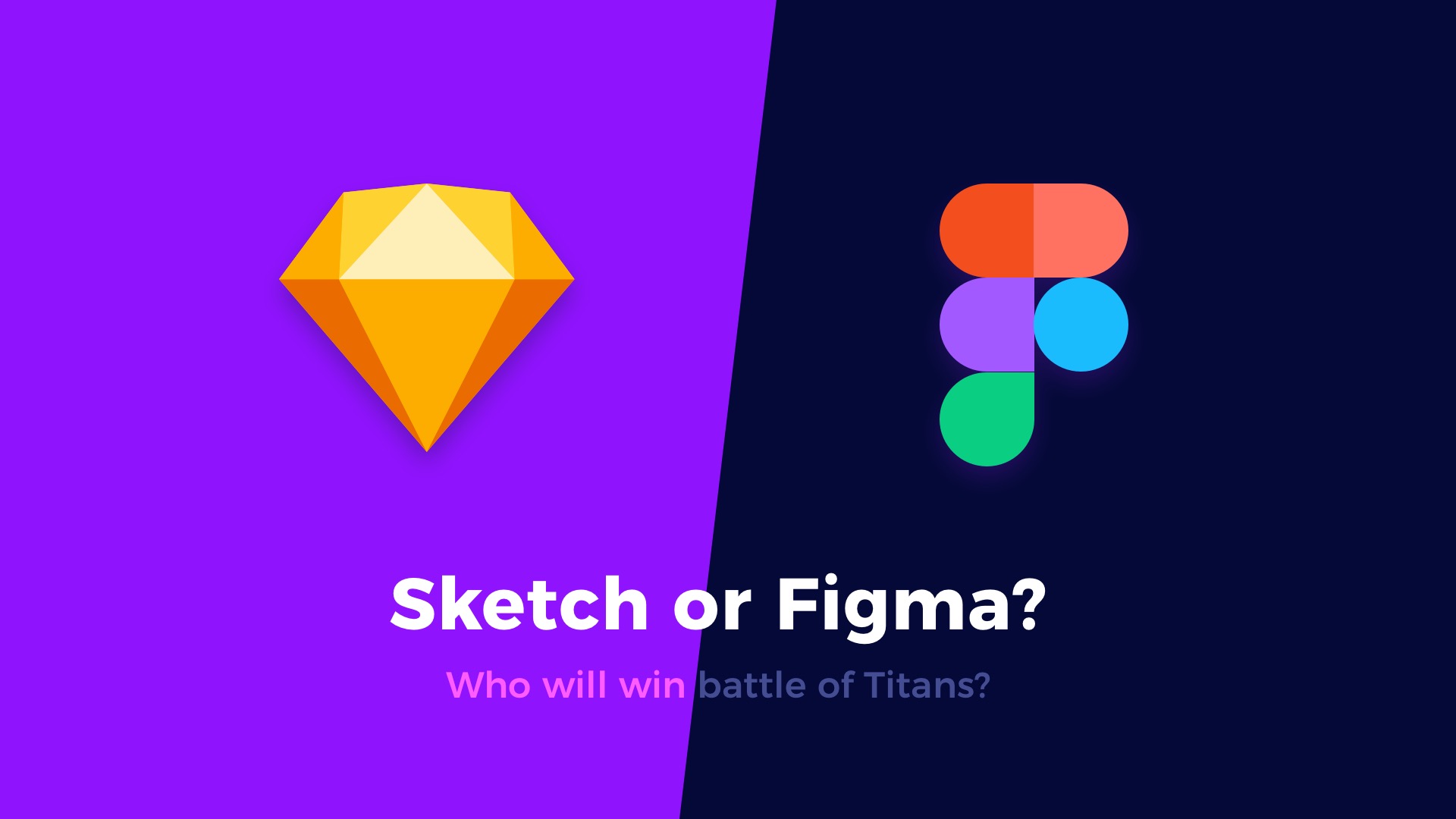Are you tired of feeling stuck with your design tools? Do you wish for a creative space where working together is easy, ideas flow freely, and your designs come to life effortlessly? If so, get ready to learn about the exciting world of Figma versus Sketch.
Today, choosing the right design software is crucial for success in our fast-paced digital world. It’s not just about making pretty designs anymore – it’s about working together, sharing ideas, and pushing boundaries.
Figma is like a breath of fresh air. It’s a design platform that lives in the cloud, making it easy for teams to collaborate in real-time. With its simple layout and powerful features, Figma is changing the game for designers everywhere.
But what about Sketch? Sketch has been a favorite among designers for its flexibility and powerful tools. It’s great for creating precise designs and has a strong community of users.
So, why choose Figma over Sketch? In this comparison, we’ll break down the differences between the two, from how easy they are to use to how much they cost. Whether you’re a beginner or a pro, we’ll help you decide which tool is right for you.
So, get ready to explore the world of design with us. Figma or Sketch – the choice is yours. Let’s dive in!
Usability

Design software shouldn’t be like solving a complicated puzzle. It should be straightforward, easy to understand, and intuitive to use. Let’s start by looking at how Figma and Sketch stack up in terms of usability.
Figma’s Cloud-Based Platform vs. Sketch’s File-Based System
Imagine you’re working on a project with a team spread across different locations. With Figma, collaborating is as easy as opening a web browser. Since it’s cloud-based, everyone can work on the same design in real-time, without worrying about version control or syncing files. It’s like working on a Google Doc – simple and hassle-free. On the other hand, Sketch uses a file-based system, meaning you have to save and share design files manually. While this might work fine for solo projects, it can quickly become a headache when multiple people need to work together.
In addition, Figma’s cloud-based approach means you can access your designs from any device with an internet connection. Whether you’re on your laptop, tablet, or even your phone, you can pick up right where you left off. This flexibility is a game-changer for designers who are always on the go.
Real-Time Collaboration Features in Figma
One of the most powerful features of Figma is its real-time collaboration capabilities. Picture this: you’re brainstorming ideas with your team, and someone suggests a change to the design. With Figma, you can see their edits instantly, as they happen. No more waiting for email attachments or dealing with conflicting versions – everyone is always on the same page.
But it’s not just about seeing changes in real-time. Figma also makes it easy to leave comments, tag team members, and track changes. This makes collaboration a breeze, whether you’re working with a small team or a large group of stakeholders.
In contrast, Sketch lacks built-in collaboration features. While you can share files and gather feedback through third-party tools, it’s not as seamless as working directly within the design tool itself. This can slow down the iteration process and lead to miscommunications among team members.
Overall, when it comes to usability, Figma’s cloud-based platform and real-time collaboration features give it a clear edge over Sketch’s file-based system. With Figma, collaboration is effortless, intuitive, and – dare we say it – fun.
Design Features

When it comes to design software, the features you have at your fingertips can make all the difference in bringing your creative visions to life. Let’s dive into the key design features of both Figma and Sketch to see how they compare.
Vector Editing Capabilities in Both Tools
Vectors are the building blocks of digital design – they allow you to create everything from simple shapes to complex illustrations with precision and clarity. Both Figma and Sketch offer robust vector editing capabilities, but they approach it in slightly different ways.
In Figma, vector editing is seamlessly integrated into the design process. You can draw shapes, manipulate paths, and adjust anchor points with ease, all within the same interface. Plus, Figma’s vector tools are designed to work seamlessly with its other features, like layers and styles, making it easy to create and manage complex designs.
On the other hand, Sketch has long been praised for its powerful vector editing tools. With features like boolean operations, vector networks, and smart guides, Sketch gives you all the tools you need to create precise, pixel-perfect designs. Plus, Sketch’s vector editing interface is clean and intuitive, making it easy to learn for beginners and efficient for experienced designers.
Prototyping Functionality: Figma’s Interactive Prototypes vs. Sketch’s Plugins
Prototyping is an essential part of the design process, allowing you to test and iterate on your designs before they go live. Figma and Sketch both offer prototyping functionality, but they take different approaches to it.
In Figma, prototyping is built right into the platform, allowing you to create interactive prototypes with just a few clicks. You can link together different frames, add animations and transitions, and even create interactive components like buttons and menus. Plus, since Figma is cloud-based, you can share your prototypes with team members or stakeholders and gather feedback in real-time.
Sketch, on the other hand, relies on plugins for prototyping. While there are many plugins available that add prototyping functionality to Sketch, it’s not as tightly integrated as it is in Figma. This can make the prototyping process feel disjointed and less intuitive, especially for designers who are new to the tool.
In summary, both Figma and Sketch offer powerful design features, but they approach vector editing and prototyping in slightly different ways. Whether you prefer the seamless integration of Figma or the plugin ecosystem of Sketch will depend on your specific needs and workflow preferences.
Integration and Compatibility

In the world of design, collaboration doesn’t happen in a vacuum. It’s essential for design software to play nicely with other tools and platforms to support seamless workflows. Let’s explore how Figma and Sketch fare when it comes to integration and compatibility.
Figma’s Cross-Platform Compatibility
Figma takes pride in its cross-platform compatibility, meaning you can access and work on your designs from virtually any device with an internet connection. Whether you’re using a Mac, PC, or even a tablet or smartphone, you can open Figma in a web browser and pick up right where you left off. This flexibility is a game-changer for teams with diverse hardware setups or designers who are always on the move.
Moreover, Figma’s cross-platform compatibility extends beyond just device compatibility – it also supports collaboration across different operating systems. This means that Mac users, Windows users, and even Linux users can work together seamlessly, without any compatibility issues or file format headaches. It’s a breath of fresh air in a world where compatibility issues often plague collaborative projects.
Third-Party Integrations and Plugins for Both Tools
In addition to its built-in features, both Figma and Sketch offer support for third-party integrations and plugins to extend their functionality even further. These integrations can range from project management tools and version control systems to design libraries and asset management platforms.
Figma boasts a wide range of integrations with popular tools like Slack, Trello, and Jira, making it easy to incorporate design into your team’s existing workflows. Plus, Figma’s plugin ecosystem is rapidly growing, with new plugins being added regularly to enhance your design process.
Similarly, Sketch has a robust plugin ecosystem, with thousands of plugins available to add new features and streamline your workflow. Whether you need tools for version control, design systems, or prototyping, there’s likely a plugin available to meet your needs. Plus, Sketch’s integrations with tools like Abstract and Zeplin make it easy to collaborate with developers and other stakeholders.
Overall, both Figma and Sketch excel when it comes to integration and compatibility, offering a wide range of options to suit different workflows and preferences. Whether you prefer Figma’s cloud-based approach or Sketch’s plugin ecosystem will depend on your specific needs and the tools you already use in your design process.
Pricing and Licensing

Understanding the costs associated with design software is crucial for both individuals and teams. Let’s delve into the pricing and licensing models of Figma and Sketch to help you make an informed decision.
Comparison of Figma’s Subscription Model and Sketch’s One-Time Purchase
Figma operates on a subscription model, meaning users pay a recurring fee to access the platform. This subscription fee typically includes access to all features and updates, as well as cloud storage for your designs. The subscription model offers flexibility for individuals and teams, allowing you to scale up or down as needed and ensuring you always have access to the latest features and improvements.
On the other hand, Sketch follows a more traditional one-time purchase model, where users pay a one-time fee to download and use the software indefinitely. While this can be appealing for individuals who prefer a one-time payment, it’s important to note that updates and new features may require purchasing a new license or paying an upgrade fee. Additionally, Sketch does not include cloud storage as part of its licensing, so users must rely on third-party solutions for collaboration and file storage.
Cost-Effectiveness for Individuals and Teams
When considering the cost-effectiveness of Figma and Sketch, it’s essential to factor in not only the initial cost but also the long-term value and benefits. While Figma’s subscription model may seem more expensive upfront, it provides continuous access to updates, new features, and collaborative tools without any additional fees. This can result in significant cost savings over time, especially for teams who rely on frequent collaboration and iteration.
On the other hand, Sketch’s one-time purchase model may appear more affordable initially, but users may end up paying more in the long run for updates and additional features. Additionally, teams using Sketch may incur additional costs for third-party collaboration tools and services, further increasing the total cost of ownership.
Ultimately, the choice between Figma’s subscription model and Sketch’s one-time purchase depends on your budget, workflow, and long-term needs. By carefully evaluating the pricing and licensing options of both tools, you can make an informed decision that aligns with your specific requirements and goals.
Community and Support

In the world of design, having access to a supportive community and reliable support channels can make a significant difference in your workflow. Let’s explore how Figma and Sketch compare when it comes to community engagement and support.
Figma’s Robust Online Community and Resources
Figma boasts a vibrant and active online community, where designers from around the world come together to share ideas, tips, and resources. Whether you’re a beginner looking for tutorials or an experienced designer seeking inspiration, Figma’s community has something for everyone. From official forums and user groups to social media channels and online communities, there are countless opportunities to connect with fellow designers, ask questions, and learn from others’ experiences.
Moreover, Figma provides a wealth of educational resources and documentation to help users get started and master the platform. From step-by-step tutorials and video guides to comprehensive documentation and case studies, Figma’s resources cover everything from the basics to advanced techniques. Plus, Figma regularly hosts webinars, workshops, and events to foster learning and collaboration within the community.
Sketch’s Support Channels and Community Engagement
While Sketch may not have the same level of online community engagement as Figma, it still offers robust support channels and resources for users. Sketch provides official support through its website, including documentation, tutorials, and FAQs to help users troubleshoot issues and learn new skills. Additionally, Sketch offers dedicated support channels, including email support and a community forum, where users can ask questions, share ideas, and connect with other Sketch users.
Furthermore, Sketch has a strong presence on social media platforms like Twitter and Facebook, where users can stay updated on the latest news, updates, and events. Sketch also hosts its own annual design conference, Sketch Summer, where designers can network, attend workshops, and learn from industry experts. While Sketch’s community may be smaller than Figma’s, it still offers valuable resources and opportunities for collaboration and support.
In summary, both Figma and Sketch offer valuable community engagement and support resources for designers. Whether you prefer Figma’s vibrant online community or Sketch’s dedicated support channels, you’ll find ample opportunities to connect with fellow designers, learn new skills, and get the help you need to succeed.
Performance and Speed

In the fast-paced world of design, every second counts. Performance and speed can significantly impact your productivity and efficiency. Let’s take a closer look at how Figma and Sketch stack up in terms of performance.
Comparison of Rendering Speeds
When it comes to rendering speeds, Figma has a clear advantage over Sketch. Figma’s cloud-based platform and optimized rendering engine allow for lightning-fast performance, even when working on complex projects with multiple artboards and layers. Whether you’re zooming in and out, scrolling through your designs, or making real-time edits, Figma delivers smooth and responsive performance without any lag or slowdown.
On the other hand, Sketch’s performance can vary depending on factors like the size and complexity of your design files, as well as your hardware setup. While Sketch has made significant improvements in recent years to optimize performance, some users still experience occasional lag or sluggishness, especially when working on larger projects or older hardware.
Handling Large-Scale Projects and Complex Designs
As design projects grow in size and complexity, the ability to handle large-scale projects becomes increasingly important. Figma excels in this regard, thanks to its cloud-based architecture and collaborative features. Whether you’re working on a small team or a large organization, Figma can handle projects of any size with ease, allowing multiple designers to work on the same file simultaneously without any performance issues.
In contrast, Sketch’s file-based system can pose challenges when working on large-scale projects or collaborating with multiple team members. File sizes can quickly become bloated, leading to slower performance and longer load times. Additionally, syncing changes and managing version control can be cumbersome, especially when working with distributed teams or remote collaborators.
In summary, when it comes to performance and speed, Figma offers superior performance and responsiveness compared to Sketch. With its cloud-based platform and optimized rendering engine, Figma can handle large-scale projects and complex designs with ease, ensuring smooth and efficient workflow for designers of all levels.
Security and Privacy

In the digital age, protecting your designs and data is paramount. Let’s explore how Figma and Sketch prioritize security and privacy to keep your work safe from prying eyes.
Data Security Measures in Figma and Sketch
Figma takes data security seriously, implementing robust measures to safeguard your designs and sensitive information. With end-to-end encryption and industry-standard security protocols, Figma ensures that your data remains encrypted both in transit and at rest, protecting it from unauthorized access or tampering. Additionally, Figma’s cloud-based platform undergoes regular security audits and compliance checks to ensure that it meets the highest standards of data security and privacy.
Similarly, Sketch prioritizes data security and privacy, implementing encryption and other security measures to protect your design files and personal information. Sketch’s file-based system allows you to control access to your designs and share them securely with team members or collaborators. Plus, Sketch offers features like two-factor authentication and password protection to add an extra layer of security to your account.
Privacy Policies and Data Handling
When it comes to privacy policies and data handling, both Figma and Sketch are committed to protecting your privacy and respecting your data rights. Figma’s privacy policy outlines how it collects, uses, and stores your personal information, as well as your rights and choices regarding your data. Figma is transparent about its data practices and ensures that your data is handled in accordance with applicable privacy laws and regulations.
Similarly, Sketch’s privacy policy details how it collects, stores, and processes your personal information, as well as your rights and choices regarding your data. Sketch is committed to protecting your privacy and only collects the minimum amount of data necessary to provide its services. Plus, Sketch offers features like anonymized crash reporting and opt-out mechanisms to give you control over your data.
In summary, both Figma and Sketch prioritize security and privacy to ensure that your designs and data remain safe and secure. By implementing encryption, security protocols, and transparent privacy policies, Figma and Sketch provide peace of mind for designers who value privacy and data security.
Future Development and Updates
Staying ahead in the ever-evolving world of design requires software that continues to innovate and adapt to new trends and technologies. Let’s delve into how Figma and Sketch approach future development and updates to keep their users at the forefront of design innovation.
Figma’s Rapid Iteration and Update Cycle
Figma prides itself on its rapid iteration and update cycle, continually releasing new features and improvements to enhance the user experience. With a dedicated team of developers and designers, Figma listens to user feedback and prioritizes features that will have the greatest impact on its community. This agile approach to development allows Figma to respond quickly to changing user needs and market trends, ensuring that its platform remains cutting-edge and competitive.
Moreover, Figma’s cloud-based platform enables seamless updates, with new features and improvements rolled out automatically to all users. This means you’ll always have access to the latest tools and capabilities without needing to manually update or install anything. Whether it’s adding new collaboration features, improving performance, or enhancing existing tools, Figma is committed to continuous innovation and improvement.
Sketch’s Development Roadmap and Upcoming Features
Similarly, Sketch maintains a transparent development roadmap, outlining its plans for future updates and features. Through its public roadmap and beta testing program, Sketch engages with its community to gather feedback and insights on proposed changes and improvements. This collaborative approach ensures that Sketch’s development efforts are aligned with user needs and priorities, resulting in meaningful and impactful updates.
Sketch also prioritizes stability and reliability in its updates, thoroughly testing new features and improvements to ensure they meet the highest standards of quality. While Sketch’s update cycle may not be as rapid as Figma’s, it focuses on delivering robust and polished updates that enhance the user experience and address key pain points.
In summary, both Figma and Sketch are committed to future development and updates, continually innovating and improving their platforms to meet the evolving needs of designers. Whether it’s through rapid iteration and automatic updates in Figma or transparent development roadmaps and beta testing programs in Sketch, both tools are dedicated to staying ahead of the curve and delivering value to their users.
Conclusion
After exploring the various aspects of Figma and Sketch, it’s time to wrap up our comparison and draw some conclusions. Let’s summarize the key points and offer recommendations based on your design needs and preferences.
Summary of Key Points
Throughout this comparison, we’ve examined the usability, design features, integration, pricing, community support, performance, security, and future development of both Figma and Sketch. Each tool has its strengths and weaknesses, and understanding these differences is crucial in making an informed decision for your design workflow.
Figma shines in its cloud-based platform, real-time collaboration features, and rapid iteration cycle. Its intuitive interface, seamless integration, and robust community make it a top choice for teams and individuals looking for a modern and efficient design tool. On the other hand, Sketch excels in its powerful vector editing capabilities, extensive plugin ecosystem, and commitment to stability and reliability. Its file-based system and one-time purchase model may appeal to designers who prefer a more traditional approach.
Recommendations
When it comes to choosing between Figma and Sketch, there is no one-size-fits-all answer. It ultimately depends on your specific needs, preferences, and workflow. If you value seamless collaboration, flexibility, and continuous innovation, Figma may be the right choice for you. Its cloud-based platform and real-time collaboration features make it ideal for teams working on projects of any size or complexity. Plus, its subscription model ensures that you always have access to the latest features and updates.
On the other hand, if you prioritize powerful vector editing tools, extensive plugin support, and stability, Sketch may be the better option. Its file-based system and one-time purchase model offer a familiar and straightforward experience for designers who prefer to work offline or have strict budget constraints. Additionally, Sketch’s extensive plugin ecosystem allows you to customize and extend its functionality to suit your specific needs and workflow.
Ultimately, the best way to determine which tool is right for you is to try them out for yourself. Both Figma and Sketch offer free trials, allowing you to explore their features and capabilities firsthand. Consider your design goals, team collaboration needs, and budget constraints, and choose the tool that aligns with your priorities. Whether you choose Figma, Sketch, or another design tool altogether, remember that the most important thing is to find a tool that empowers you to unleash your creativity and bring your design visions to life.
FAQs and People Also Ask Queries
As we conclude our comparison between Figma and Sketch, it’s essential to address some common questions and queries that users may have. Let’s delve into these frequently asked questions to provide clarity and further insight into the topic.
Is Figma Better for Collaboration?
Yes, Figma is widely regarded as one of the best tools for collaboration in the design industry. Its cloud-based platform allows multiple users to work on the same design file simultaneously, facilitating real-time collaboration and eliminating version control issues.
With features like commenting, prototyping, and live editing, Figma makes it easy for teams to communicate, iterate, and share feedback throughout the design process. Whether you’re working with a small team or a large organization, Figma’s collaboration features can greatly enhance your productivity and efficiency.
Which Tool Is More Beginner-Friendly?
Both Figma and Sketch offer intuitive interfaces and user-friendly features, making them accessible to designers of all skill levels. However, many users find Figma to be more beginner-friendly due to its cloud-based platform and straightforward collaboration features.
With Figma, beginners can easily create, share, and iterate on designs without worrying about file management or compatibility issues. Plus, Figma’s extensive documentation, tutorials, and community support make it easy for beginners to get started and learn new skills.
Sketch, on the other hand, may have a steeper learning curve for beginners, especially those who are new to design software or vector editing tools. While Sketch offers powerful features and customization options, it may require more time and effort to master compared to Figma.
How Do Figma and Sketch Compare in Terms of Pricing?
When it comes to pricing, Figma and Sketch offer different models that cater to different budgets and preferences. Figma operates on a subscription model, with pricing plans based on the number of users and features you need.
While this may result in recurring costs over time, it provides continuous access to updates, new features, and cloud storage for your designs. Sketch, on the other hand, follows a one-time purchase model, where users pay a one-time fee to download and use the software indefinitely.
While this may seem more cost-effective upfront, it may require additional payments for updates and new features in the future. Ultimately, the choice between Figma and Sketch depends on your budget, workflow, and long-term needs.
In summary, Figma and Sketch both have their strengths and weaknesses when it comes to collaboration, beginner-friendliness, and pricing. By understanding these key differences and considering your specific requirements, you can choose the tool that best fits your design goals and preferences. Whether you’re looking for seamless collaboration, ease of use, or affordability, Figma and Sketch offer solutions to meet your needs and empower you to create amazing
